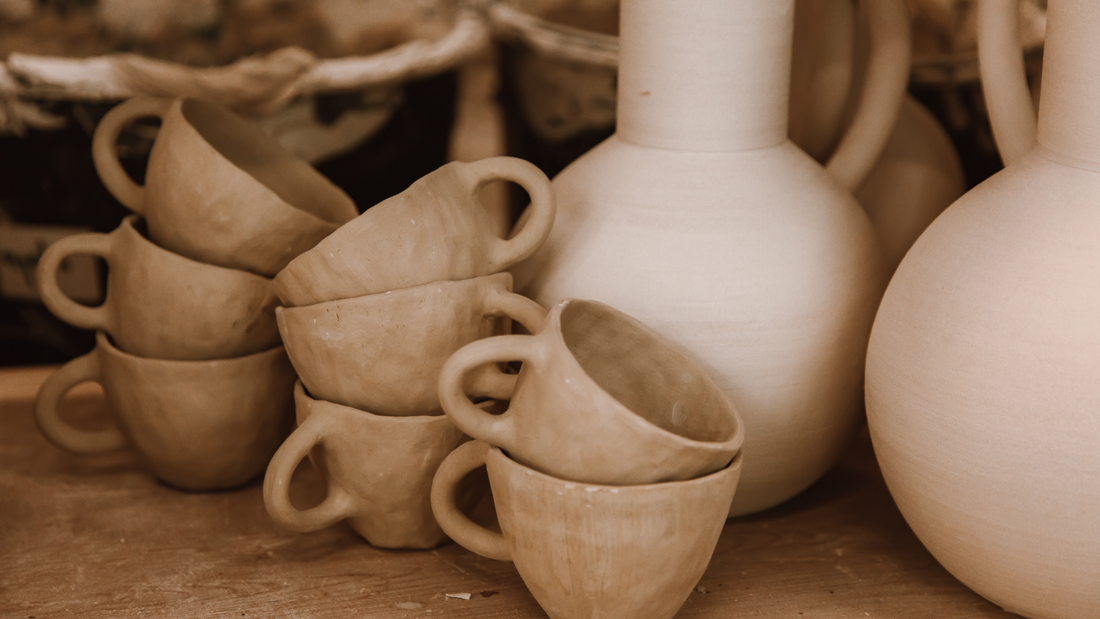
Pottery: The Universal Art Form
Share
Pottery is one of humanity’s oldest and most universal art forms, tracing back thousands of years to ancient civilizations. More than just functional vessels, pottery reflects culture, creativity, and craftsmanship, blending form and function in everyday objects.
_______________________________________________________________________________________________________
Brief Introduction:
Pottery is the art and craft of making objects from clay, which are then hardened by heat in a kiln. It dates back to prehistoric times—over 10,000 years ago—and has been practiced across cultures for both utilitarian and artistic purposes. The basic process involves shaping the clay (by hand or using a potter’s wheel), drying, decorating or glazing, and firing at high temperatures.
There are three main types of pottery:
- Earthenware – Porous and fired at low temperatures; often reddish or brown.
- Stoneware – Durable, non-porous, and fired at higher temperatures; commonly grey or brown.
- Porcelain – Very fine, white, and translucent; fired at very high temperatures.
Pottery is valued for its blend of function, artistry, and cultural significance. Today, it continues to be a vital form of both artistic expression and practical design.
_______________________________________________________________________________________________________
Stoke-on-Trent holds a central and iconic place in the history of pottery, often called the “Potteries” because of its deep-rooted connection to ceramic production.
_______________________________________________________________________________________________________
Significance of Stoke-on-Trent in Pottery
The Heart of British Pottery Industry
Stoke-on-Trent became the main center for pottery manufacturing in the UK, especially from the 18th century onward.
Its unique combination of natural resources—like abundant local clay, coal for firing kilns, and access to waterways—made it ideal for pottery production.
________________________________________________________________________________________
Birthplace of Renowned Pottery Brands
Famous manufacturers such as Wedgwood, Royal Doulton, Spode, Minton, and Shelley established their factories here.
These companies helped transform pottery from craft to large-scale industrial production with innovative techniques and styles.
________________________________________________________________________________________
Industrial Innovation
Stoke potteries pioneered advances like Josiah Wedgwood’s development of fine bone china and industrialized production methods.
Innovations in glazing, decoration, and mass production made high-quality ceramics affordable and popular worldwide.
________________________________________________________________________________________
Cultural and Economic Impact
The pottery industry shaped the social and economic life of Stoke-on-Trent for centuries, providing employment and fostering skilled craftsmanship.
The city’s identity is closely tied to its pottery heritage, often celebrated in museums and cultural institutions like the Gladstone Pottery Museum and the Stoke-on-Trent Ceramics Festival.
________________________________________________________________________________________
Global Influence
Stoke’s potteries exported goods globally, influencing ceramic styles and techniques worldwide. It played a key role in establishing British ceramics as a hallmark of quality and design.
_______________________________________________________________________________________________________
Stoke-on-Trent was and remains the cradle of the British pottery industry, blending tradition, innovation, and craftsmanship that shaped both local identity and global ceramic art.
